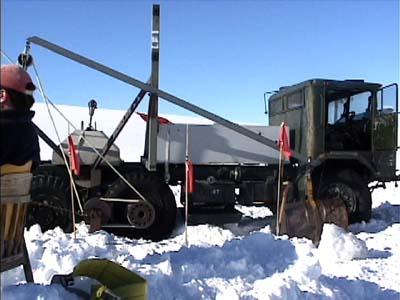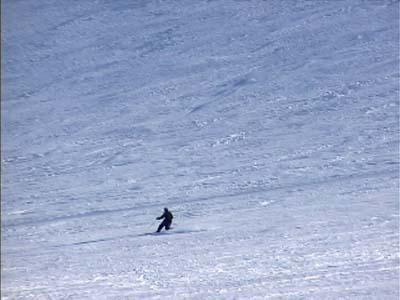28 January, 2001
McMurdo is very isolating due to the fact that everything is here.
Established in 1956, the station contains about 100 buildings and can
accommodate 1200 people during the summer and 200 in the winter. McMurdo
has its own hospital, church, fleet post office, library, video store,
(free) barbershop, two clubs, coffeehouse, shuttlebus and hydroponics
greenhouse (whose crops include lettuce, tomatoes and green peppers). Mac
also has its own bowling alley that will challenge all abilities since the
alley itself is like an old New England country road complete with frost
heaves.
Just about the time when you feel like you have forgotten where you are it
is time to get out and about. The easiest way to do this is to attend the
half hour recreational briefing. Here you get to watch a half hour video
complete with swollen frozen feet and a 1930's soundtrack. It is also here
that you learn the Search and Rescue (SAR) team maintains the Castlerock
hiking trail by monitoring for crevasse danger and marking the trial with
green or orange colored flags. The SAR team has a rule: avoid the black
and blue markers and you wont be black and blue.
Good rule.
With a true blue sky above and wearing some of my ECW (extreme cold
weather) gear, I'm ready to head out. I have also packed the remaining ECW
gear in my backpack along with chocolate, mixed gorp, and Raro (the Aussie
equivalent of Gatorade). Leaving my room, I feel like I am carrying more
gear than Mallory on his first attempt of Everest. Making my way to the
Firehouse I meet up with Katie Catapano, part of the Dartmouth research
team I am here with. At the Firehouse we one sign-out and leave an
estimated time to complete our hike, 6hrs.
While hiking the Castlerock Loop trail we are walking on seventeen feet of
permanent snow. The trail climbs and winds itself away from the station
complete with incredible views of: The Royal Society Mountain Range, the
Ross Sea, Willy field (airstrip for the C130's), and Mt. Erebus, the local
active volcano. At the half-way point the trail turns back and starts
heading for Scott Base. It is here that you pass the Scott Base Skiing
Hill (Skiwi Hill), the southern most ski hill on the planet.
While passing the Skiwi, the Kiwi's invited us to enjoy the slope and
barbecue. An invitation is the only way Americans can visit the slope.
This rule is intended to control the crowd at the slope. However, everyone
who walked by was invited.
Already on the hill were people telemark skiing. Taking skiers up the hill
was a rope tow designed using Kiwi ingenuity: a 1970 American one ton
truck and a 1930's rope. As luck would have it, I had brought the newest
board from Jake Burton, a skateboard designed for snow. So remember when
you are traveling in the southern most part of the world to plan on
visiting your New Zealand neighbors at the Skiwi mate-

The views from the hike were incredible. In the background you can see the active volcano Mt. Erebus.

Here is a rope tow design that you will not see at your favorite mountain.

The freedom to express yourself on snow!

Big air is not the problem, it is the landings. You want your snowboard...go get it.

Big Air
Contact the TEA in the field at
.
If you cannot connect through your browser, copy the
TEA's e-mail address in the "To:" line of
your favorite e-mail package.
|
